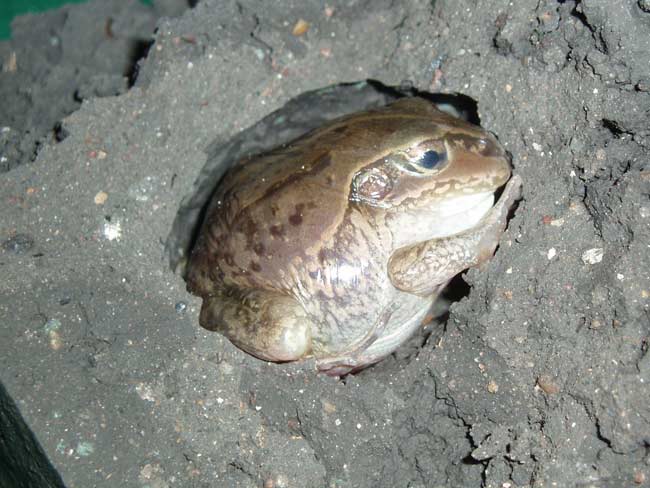Frog Dozes in Mud for Years

One species of burrowing frogs can survive for years buried in mud without food and water. New research has figured out how the frog and other "super-sleeper" animals do it.
Many species of animals go through a period of torpor to conserve energy when resources are scarce. The champion in energy-saving mode is the burrowing frog (Cyclorana alboguttata).
A team of scientists at the University of Queensland discovered that the metabolism of these frogs' cells changes radically during the dormancy period allowing maximized use of limited energy resources without ever running on empty.
This discovery could lead to medical applications down the line.
"It could potentially be useful in the treatment of energy-related disorders such as obesity," said Sara Kayes, who will present her findings at the Society of Experimental Biology Annual Meeting in Glasgow, Scotland, on Monday, June 29.
When the operation efficiency of the frog cells' mitochondria, the tiny "power plants" of cells, was measured during the dormancy period, it was found to be significantly higher compared to that observed in active animals.
This trick, known as mitochondrial coupling, allows these frogs to be extremely efficient in the use of the limited energy stores they have by increasing the total amount of energy obtained per unit consumed, allowing them to easily outperform other species whose energy production efficiency remains essentially the same even when they happen to be inactive for extended periods.
Get the world’s most fascinating discoveries delivered straight to your inbox.
If this is such an efficient way to use energy resources during dormancy, how come that it is not more widespread in the animal kingdom?
The researchers speculate that a potential drawback may be the increased production of reactive oxygen species, which may in turn lead to oxidative stress. Since these small molecules are believed to cause most of the damage during periods of re-awakening, increasing mitochondrial coupling does not seem to be a particularly good idea for animals that tend to exhibit short periods of spontaneous arousal during the dormancy period, in some cases even daily.
Burrowing frogs, on the other hand, are believed to remain deeply asleep during the entire period of dormancy. Furthermore, being cold-blooded, they don't have the need to maintain a basal level of heat production, minimizing their energy needs.
- Gallery: Amphibian Tree of Life
- Top 10 Amazing Things You Didn't Know About Animals
- Obesity: News and Information



